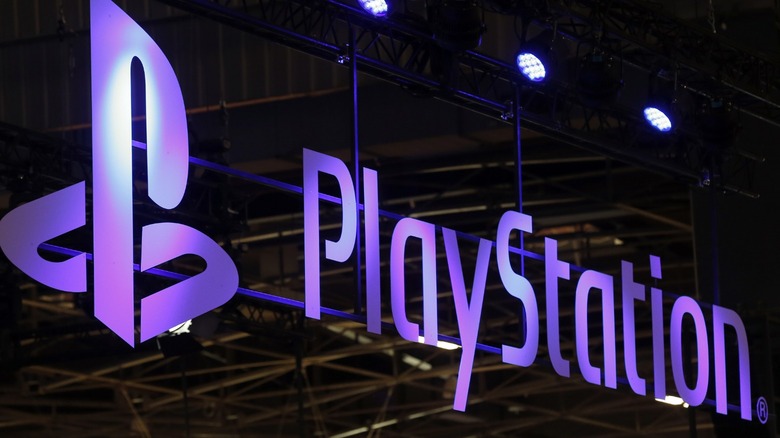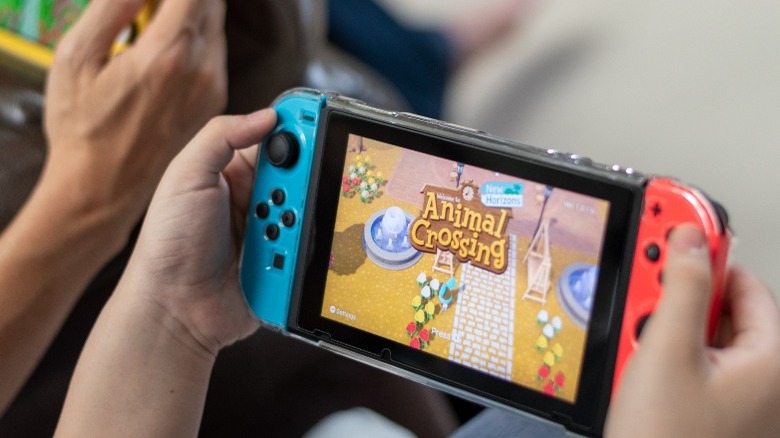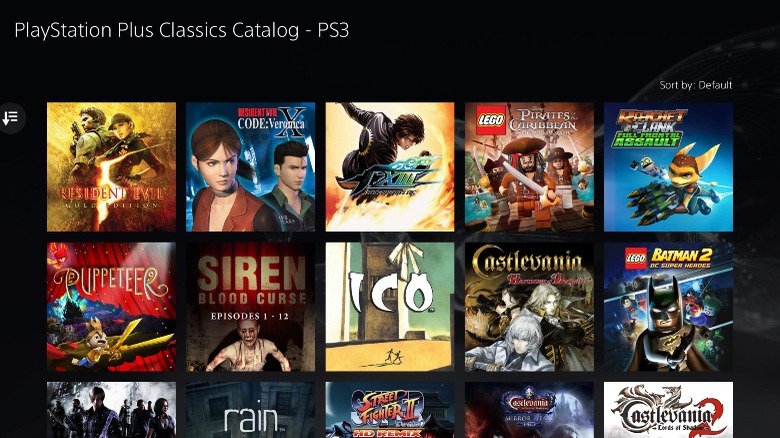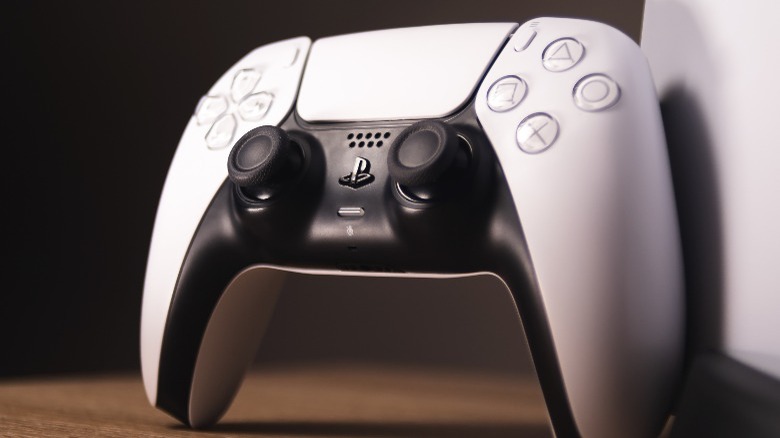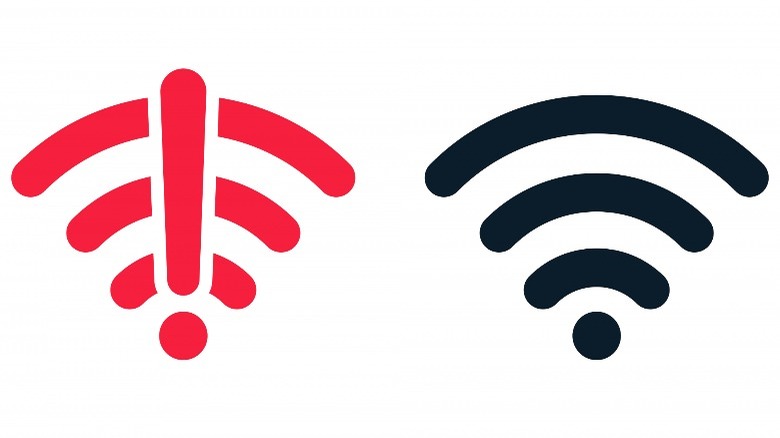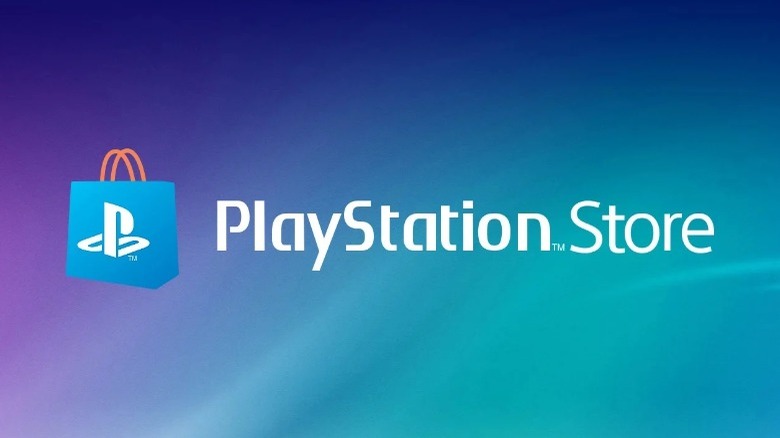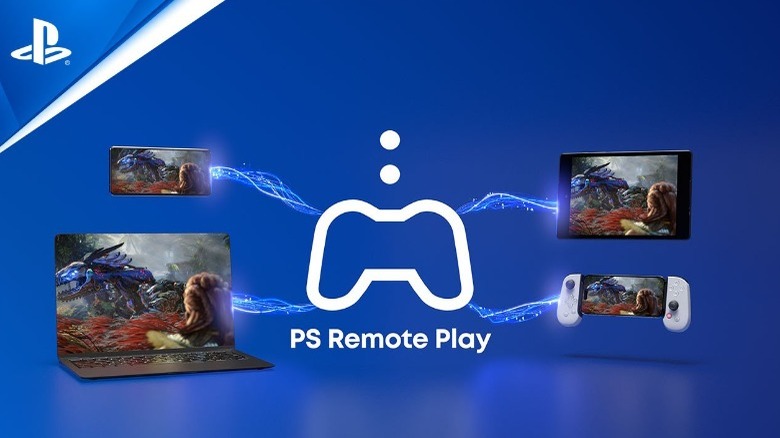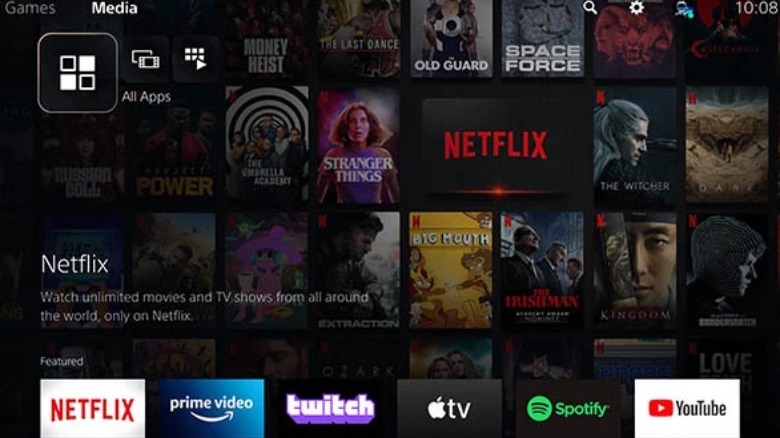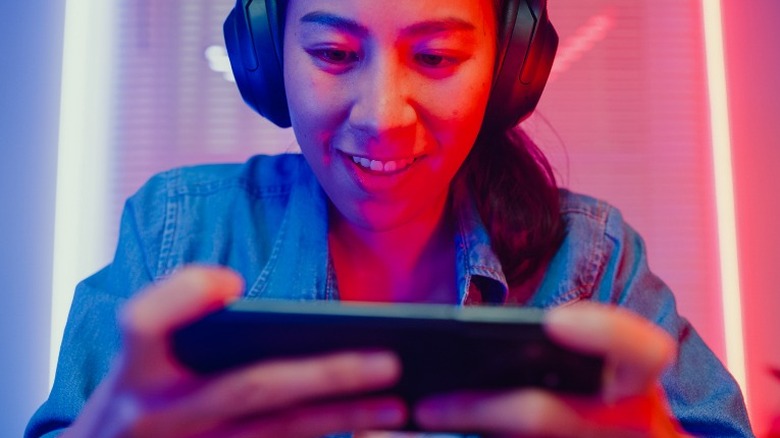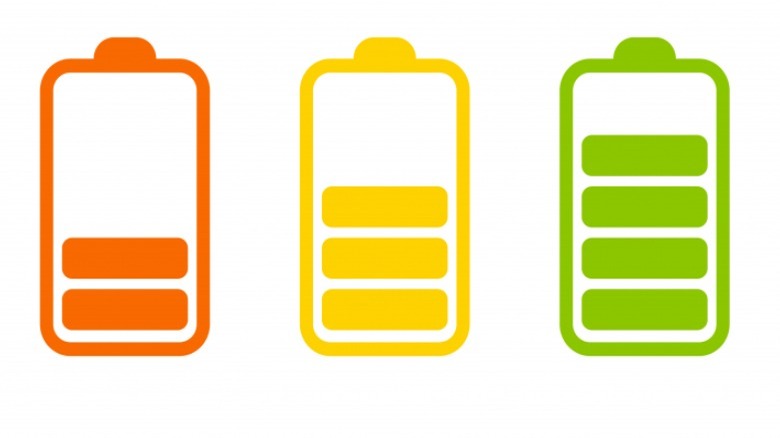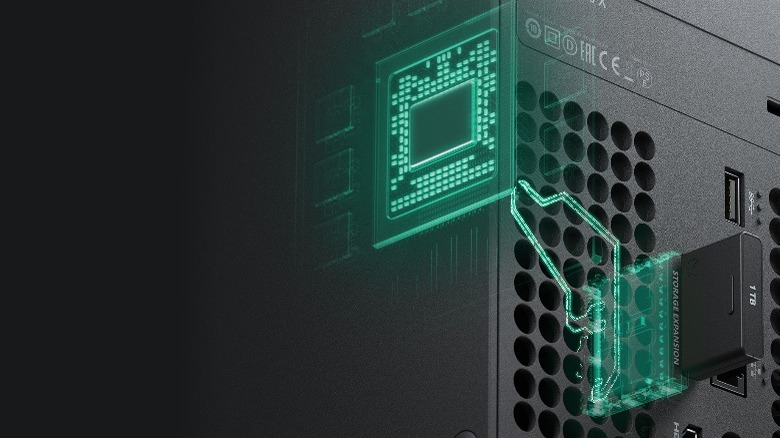10 Features We'd Want From A New PlayStation Handheld Console
With recent reports suggesting that Sony could be set to make a return to the handheld console market in the very near future, gamers of all stripes are understandably excited about what that could mean for the PlayStation brand. This would mark the third portable device from the manufacturer following mixed success with the PSP and PS Vita.
Although Sony has not revealed anything about this new console just yet, it is rumored to have the codename Q Lite and focus mainly on Remote Play in conjunction with the PS4 and PS5. But with so little information about a potential future PlayStation handheld console, there is plenty of speculation about the kind of features it might include — and the kind of features that gamers really want to see.
With that in mind, here are some of the most important things that Sony needs to include in any new portable PlayStation device.
More powerful than the Nintendo Switch
The undoubted leader in the handheld market right now is the Nintendo Switch, the hybrid console that can be played on the go in portable mode or docked so it displays on a television screen. If Sony wants to compete with Nintendo with a brand new competitor, then it will be vital for it to stand out from the Switch and be clearly superior in terms of hardware. That's because the six-year-old console has already firmly established itself with an extensive library of exceptional games that will be hard to compete with unless there's a clear advantage to owning the PlayStation handheld.
One way that Sony could do this is by making the potential system far more powerful than the Switch. In fact, it should probably aim to be more on par with Valve's own Steam Deck than Nintendo's system, which has now been available for more than half a decade. Whereas the Switch is generally only capable of outputting a resolution of just 1080p when docked or 720p in portable mode, a PlayStation handheld should aim to always be at least 1080p and possibly even 4K to give players the best experience.
Similarly, fans will want to ensure that the frame rate support for games is also high, with titles able to run at a smooth 60 FPS at the higher resolution. A larger screen — perhaps an 8-inch LCD display as rumored – is also a must so that gamers get the best image quality available, something that will only be possible with specs that are much better than what Nintendo offers.
Backward compatibility with older PlayStation games
One of the key advantages that the Xbox Series X|S has over the PS5 is its native support for backward compatibility. Microsoft's console is capable of running every Xbox One game as well as a huge back catalog of titles from the Xbox 360 and Xbox era. In fact, the Xbox Series X|S can even boost these older games to give them higher resolutions and frame rates than they originally had on the older systems.
On the other hand, the PS5 is limited to having only PS4 games being backward compatible. According to Sony, the vast majority of PS4 games are available to play on the PS5, meaning that users can access a library of more than 4,000 older titles on the new hardware. Classic games from the PS3, PS2, and PS1 era can also be accessed through a revamped PS Plus subscription. This offers the ability to stream hundreds of games from previous generations directly on the PS5.
Any potential handheld PlayStation console should also come with the ability to support backward compatibility in some way. This could mean being able to download games on the system like with the PS5 or accessing older titles via streaming through PS Plus Premium. Support for PSP and PS Vita titles would also be welcomed by many users, as it would mean other portable games that are no longer supported could get new life.
Haptic feedback and adaptive triggers
Sony has always been keen to evolve the standard gamepad controller. Whether it was the addition of additional shoulder buttons or the introduction of dual analog sticks and in-built vibration with the original DualShock controller, the company has constantly iterated on the PlayStation controller to ensure its rightful place at the forefront of gaming. Subsequent DualShock controllers for the PS3 and PS4 have brought motion controls and touchpads, but the biggest change came with the launch of the PS5.
This new console brought with it probably the biggest shift in Sony's approach to its console gamepads. Not only does it look radically different from its predecessors, but the DualSense is also larger and comes packed with some interesting features. Most notable among them are the controller's haptic feedback and adaptive triggers. These features allow players to experience more precise sensations through the gamepad that better translate what is happening on screen through detailed vibrations and triggers that can add and remove tension so they are harder to press.
The DualSense has been so well received by critics and fans that any handheld PlayStation console would have to include adaptive triggers and haptic feedback to appeal to gamers. Many users would likely miss having them if they weren't available, especially if the portable system has the same games as the PS5 that already utilize these features. Otherwise, the potential new system would feel very much like a step backward from what PlayStation fans are now accustomed to.
No requirement to always be online
One of the biggest rumors surrounding Sony's supposed portable PlayStation system is that it may come with some sort of requirement to be always online. That would mean that players would only be able to use the console while it is connected to the internet, effectively making it completely useless to those who don't have access to the web. But a requirement to have a constant internet connection can be problematic and might well limit the appeal of a portable console.
For an idea of the negative reception an always-on requirement could create, you simply have to look at the outcry that surrounded the launch of the Xbox One. Rumors that Microsoft would force its customers to be online to use the console led to a backlash that quickly put a stop to the idea. It's easy to see why as well. A constant internet connection is not feasible for every gamer, which would require a very reliable web service and consistently fast speeds. A drop in either of those would stop the handheld console from being able to work.
Of course, there's also the fact that the big advantage of a handheld system is that it is portable and can be played on the go outside of the home. A requirement to have a constant internet connection takes away from that key feature, making it far less useful to those who want to play PlayStation games while traveling or commuting.
The ability to download games
Reports about the rumored PlayStation handheld console suggest that it may be a streaming device rather than one that can play physical media or download games. While this does make sense in some respects, as it gets rid of the need for the system to have high-end specs and could significantly reduce the cost, it comes with several disadvantages.
For example, gamers would only be able to access their games by having a fast and stable internet connection, which would be problematic when using the device while on the move. It also prevents fans from being able to buy and keep their own video game collections, instead having to rely on subscription services. Titles could subsequently be removed from the service and no longer be available to stream, preventing players from being able to access them again.
Previous handheld consoles from Sony have supported physical media and digital purchases. The PSP used Universal Media Discs while the PS Vita utilized a proprietary game cartridge in addition to a digital storefront. This has set a precedent of what PlayStation fans expect from portable systems and a console that was only capable of streaming or cloud gaming would certainly not be as popular.
Support for Remote Play
Sony has been pushing Remote Play for a few years now, although it has more recently added even more support for the service with updates such as the one that adds the ability to use the DualSense controller on mobile devices. For Remote Play to work properly, though, players do need to have a compatible device and also own a PS4 or PS5 console. An official app is also necessary, which gives players the option of controlling their console directly from other devices.
The feature essentially gives gamers the opportunity to stream from a PS4 or PS5 console to a variety of other devices, including PC and mobile devices. When streaming, users can access games, switch between apps, and navigate the menus of the original console, using a DualShock 4 or DualSense controller connected to the device. It is especially useful for those who live in households with several people as it means players can continue gaming without having sole use of the main television screen.
Remote Play is an essential component for any Sony handheld device. That's because it would get rid of the need to download separate apps or connect controllers as the portable console could have native support for the service. With Sony able to design and control everything about the system, Remote Play should also be a far smoother experience than it usually is on other devices.
The ability to use streaming apps
Almost every console and portable device on the market supports a variety of software outside of traditional games. Both the PS5 and Xbox Series X|S, along with their direct predecessors, offer popular apps to players. These can be downloaded from digital stores and then used to stream content from providers such as Disney+, Netflix, Amazon Prime Video, and YouTube. Most of them also make other streaming apps available, from the likes of Spotify and Twitch.
This makes modern gaming consoles more akin to entertainment centers rather than gaming devices and gives users plenty of freedom when it comes to choosing when and how to consume content. These options are just as important for a portable device and Sony would be wise to include them in a potential handheld device. A portable console that can do more will definitely attract more users as it can do more and provide extra value.
So it is important that streaming apps for video and music are available from the start to give the console as good a chance to succeed as possible. This type of feature could be even more vital considering many of these apps are not available on the Nintendo Switch, giving Sony the opportunity to seize an advantage over its biggest competitor.
Bluetooth support for headphones
Despite the PS5's wide array of accessories, the console doesn't officially support Bluetooth audio from third-party manufacturers. Instead, gamers have to rely on plugging in Bluetooth adapters via USB to connect their favorite headphones to the console. Although this is far from ideal, especially considering the console uses Bluetooth to pair official devices such as the DualSense controller, it isn't as big a problem as it would be for a portable PlayStation console.
The main reason for this is that when playing on a television screen, there's usually not any need to use headphones. But handheld gaming is an entirely different story, as portable consoles are often used in places where blasting out sound isn't appropriate. Gaming on public transport or in spaces with many other people is usually only really possible with headphones that isolate the sound and keep you from disturbing others. With the rise in popularity of wireless headphones, Bluetooth support is crucial.
Another reason that Bluetooth support for a PlayStation handheld console is important is that most other portable consoles already have it. Both the Nintendo Switch and Steam Deck are capable of connecting to most Bluetooth headphones wirelessly without the need for adapters or workarounds. To compete with these devices in an effective manner and have parity in terms of features, support for these types of headphones will be essential.
Decent battery life
Arguably among the most important aspects of any handheld console is how long the battery lasts. The fact that these kinds of devices are designed to be played portably on the move means that they need to have enough juice to last a significant amount of time. After all, the nature of handheld devices means that users might not always have access to an outlet to charge it up. A device that can't last at least a couple of hours without the need to top up the battery will struggle to keep gamers happy as it will be limited in how often it can be used.
Choosing an appropriate battery life for Sony's potential handheld PlayStation console is best done by comparing it to some of its competitors. The latest versions of the Nintendo Switch have an estimated battery life of between four and nine hours depending on how they are being used. The Steam Deck is comparable, with the battery lasting for between two and eight hours, although it can drop even lower when running intensive games.
Meanwhile, both the PSP and PS Vita had lifespans of about four hours before needing to be charged. This suggests that the four-hour mark is a sweet spot and a good mark for Sony to aim for when it comes to any future PlayStation handheld. Anything less might not be deemed good enough by gamers who want to use it without having to keep it connected to a charger.
An internal SSD and expandable storage
Although storage was never really much of a problem with older consoles, both the PS5 and Xbox Series X|S have faced criticism for having a small amount of internal storage. That's despite the fact that they come with 825 GB and 1 TB of SSD capacity respectively. Storage issues are largely a result of the huge size of recent titles, with games such as "Call of Duty: Modern Warfare II" reaching sizes in excess of 100 GB. Without the need for complicated math, it is easy to see that with games taking up so much space then players might only be able to install a few games before they run out of room.
A handheld PlayStation would likely face similar issues so including a sizable SSD would be an important factor if the system is going to be used to download games rather than simply for streaming. An SSD will also give it the advantage of running more quietly and having faster loading times. It will also be vital for any future handheld system to have some sort of process in place for expanding the storage without having to resort to connecting an external SSD, perhaps using something similar to the expansion cards used in the Xbox Series X|S.
